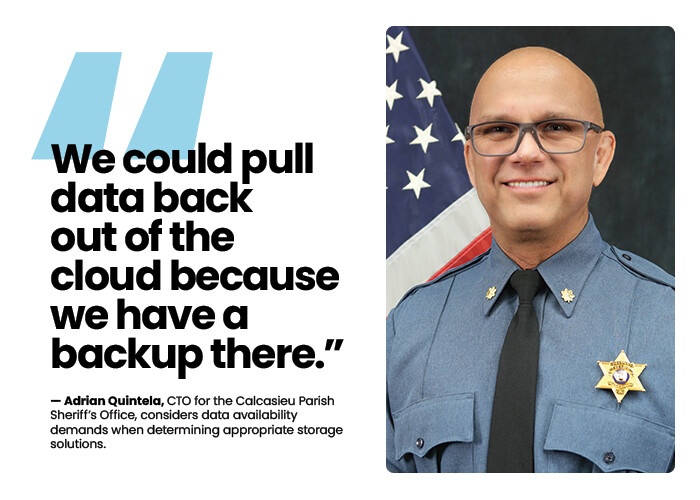Some law enforcement agencies might choose to keep sensitive data on-premises because of the time and resources that shifting systems to the cloud can require, Johnson says; they may also already have the appropriate protocols in place to be compliant with provisions such as the Criminal Justice Information Services Security Policy, developed by the advisory board of the FBI’s CJIS Division to help protect criminal justice-related information throughout its lifecycle.
“Sometimes, it’s easier to transition certain systems,” Johnson says. “You might start with the easiest ones first, or just stick with a hybrid approach, where you have some transition to the cloud, and some of them not.”
The Portland Police Bureau is keeping some applications and other items on-premises, such as high-performance elements that would require a significant connectivity level. Still, its hybrid cloud configuration continues to offer convenience, Schulte says.
“In the old days, we would be on an isolated network, sitting in the office. Our police cars were on the radio system, not broadband and the internet,” he says. “Today, we have access to virtually all of our systems and applications, whether they're on- or off-prem, over a secure VPN connection that’s managed within the Portland Police Bureau.”
DIVE DEEPER: These counties upgraded their on-premises data centers.
First Responders Consider Scalability of Hybrid Cloud
The Calcasieu Parish Sheriff’s Office’s similarly weighs multiple considerations when deciding where to store items, Quintela says, including how available information will be.
“One of the challenges is that when you have access to the database directly, it’s easy to create transactional systems between disparate systems: We’ve got information from this one system and need to automate transferring data to another,” he says. “Whenever a product gets shifted to the cloud, if they don’t have a feature-rich API, that can be problematic and create inefficiencies for us.”
EXPLORE: Cloud optimization must remain a priority for state and local governments.
If a law enforcement agency decides to pursue a hybrid cloud strategy, infrastructure changes may be necessary to facilitate ample, secure connectivity; the Portland Police Bureau, for instance, added bandwidth and Fortinet FortiGate firewalls.
Depending on an organization’s scope, adjustments could be costly, Schulte says. He suggests carefully designing hybrid systems to scale to meet subsequent cloud activity needs. This can help position you to leverage and recoup your initial investment.
“Being able to use service providers like FirstNet, Verizon, AT&T or T-Mobile in a secure manner that meets our compliance requirements — it took a long time for us to mature enough for that,” he says. “The architecture we’re running on now has opened us up to cloud services to support 100% mobile workers from end to end. That’s one of the largest outcomes of a hybrid environment.”













